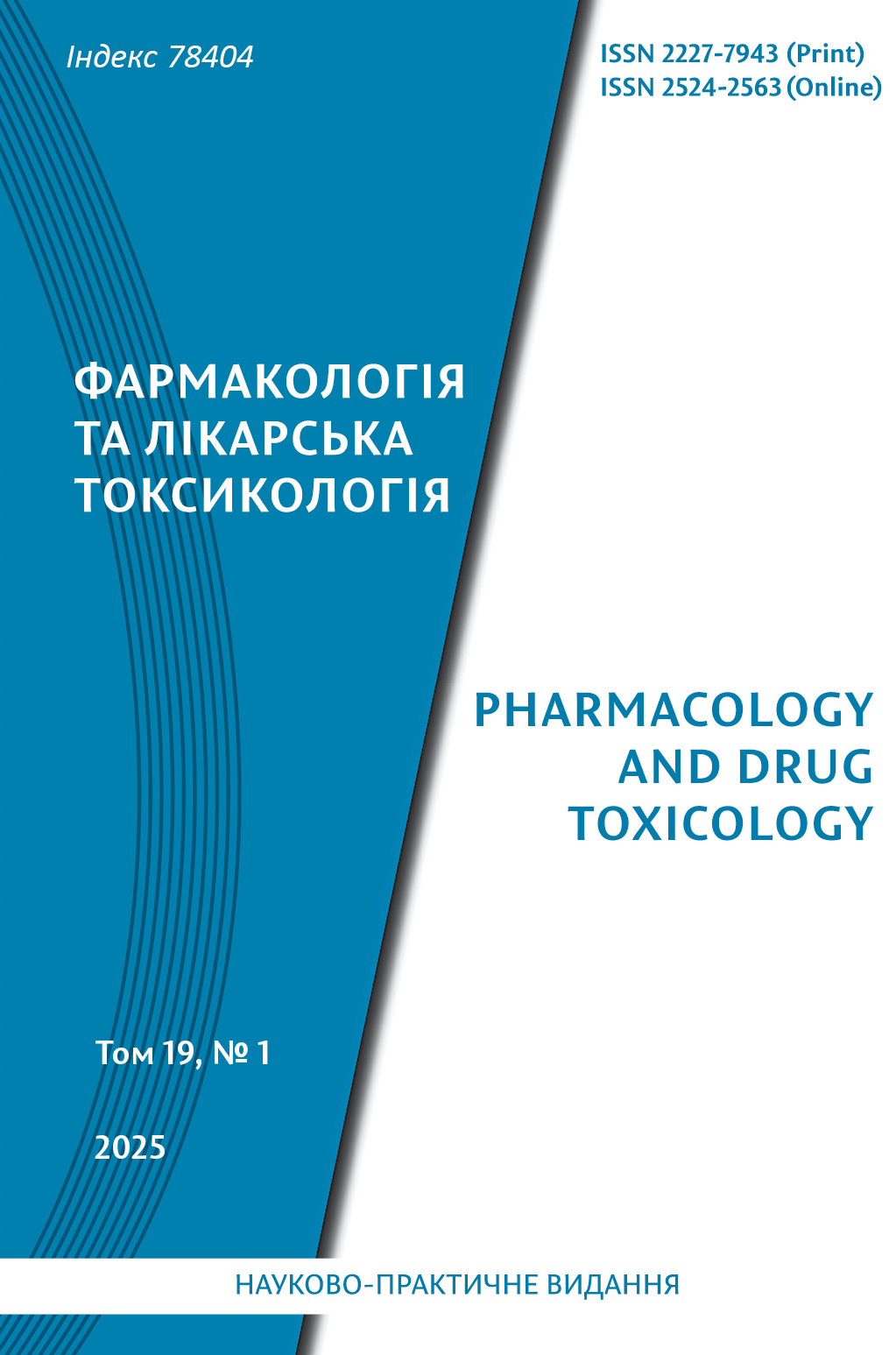Abstract
Acute heat injuries are a serious problem, especially in conditions of global warming, heat waves,
military operations and man-made disasters. They are accompanied by damage to vital body systems,
which can lead to lethal consequences. The key role in thermoregulation belongs to the products of
arachidonic acid metabolism, in particular prostaglandin E2, which is synthesized with the participation of
the COX-2 enzyme. In previous experiments we established, that among a number of COX inhibitors,
paracetamol and celecoxib demonstrate a powerful thermoprotective effect at the model of acute heat
injury in rats. Both drugs reduce the degree of hyperthermia and improve the functional state of the CNS,
however, the mechanisms of their action require clarification.
The aim of the study – to evaluate the effectiveness of the thermoprotective effect of paracetamol and
celecoxib on the background of blockade of M-cholinoreceptors, α1-adrenoreceptors, β1- and
β2-adrenoreceptors, opioid receptors, H1-receptors, and 5-HT2 receptors at the model of acute heat injury
in rats, as well as to determine the effect of paracetamol and celecoxib on the content of the COX-2
enzyme in the blood serum of rats with acute heat injury.
The experiments were performed on white male rats. The animals were placed in a thermostat at a
temperature of + 55° C for 30 min. Rectal temperature was measured before the beginning and after heat
exposure. Paracetamol at a dose of 125 mg/kg and celecoxib at a dose of 8.4 mg/kg were administered
intragastrically 30 min before the start of heat exposure. The analyzers (M-cholinoblocker atropine sulfate,
1 mg/kg; α1-adrenoblocker doxazosin, 5 mg/kg; β1,2-adrenoblocker propranolol, 4 mg/kg; H1-blocker
bilastine, 5 mg/kg; 5-HT2 receptor blocker cyproheptadine, 10 mg/kg; opioid receptor blocker naloxone,
1 mg/kg) were administered 30 min before paracetamol or celecoxib. The effectiveness of the
thermoprotective effect was assessed by the degree of increase in rectal temperature. In a separate series
of studies, the content of cyclooxygenase type 2 in the blood serum of rats was determined.
Celecoxib and paracetamol showed a typical thermoprotective effect. Atropine per se increased the
severity of heat injury, but did not interfere with the thermoprotective effect of paracetamol and celecoxib,
which indicates the absence of M-cholinergic mechanisms in their thermoprotective action. It was found
that propranolol, doxazosin, naloxone, bilastine and cyproheptadine have their own thermoprotective
effect and did not eliminate it, and doxazosin even enhanced the effect of celecoxib. Doxazosin and
bilastine did not significantly affect the antihyperthermic effect of paracetamol. Propranolol completely
abolished it, which indicates the participation of β-adrenergic mechanisms in the action of paracetamol.
Naloxone tended to, and cyproheptadine significantly weakened the thermoprotective effect of
paracetamol, which may indicate the participation of opioidergic and serotoninergic links in its mechanism.
During acute heat injury, the content of cyclooxygenase-2 in the blood serum of control rats and especially
against the background of paracetamol treatment tended to increase. Celecoxib significantly reduced it
compared to the parameters of the control pathology groups and paracetamol, which may participate in
the mechanism of its thermoprotective activity. Thus, blockade of M-cholinoreceptors aggravates, and blockade of α1-adrenoreceptors, β1- and
β2-adrenoreceptors, opioid receptors, H1-receptors, 5-HT2 receptors facilitates the course of acute heat
injury. The mechanisms associated with all of the above receptors are not involved in the thermoprotective
effect of celecoxib. In the mechanism of thermoprotective action of paracetamol, unlike celecoxib,
β-adrenergic and serotoninergic (mediated by 5-HT2 receptors) links play a significant role, and
opioidergic – a moderate role. Paracetamol tends to increase, and celecoxib statistically significantly
reduces the content of COX-2 in the blood of rats with acute heat injury. Therefore, the mechanisms of
protective action of paracetamol and celecoxib during acute exposure to high environmental temperature
are significantly different.
